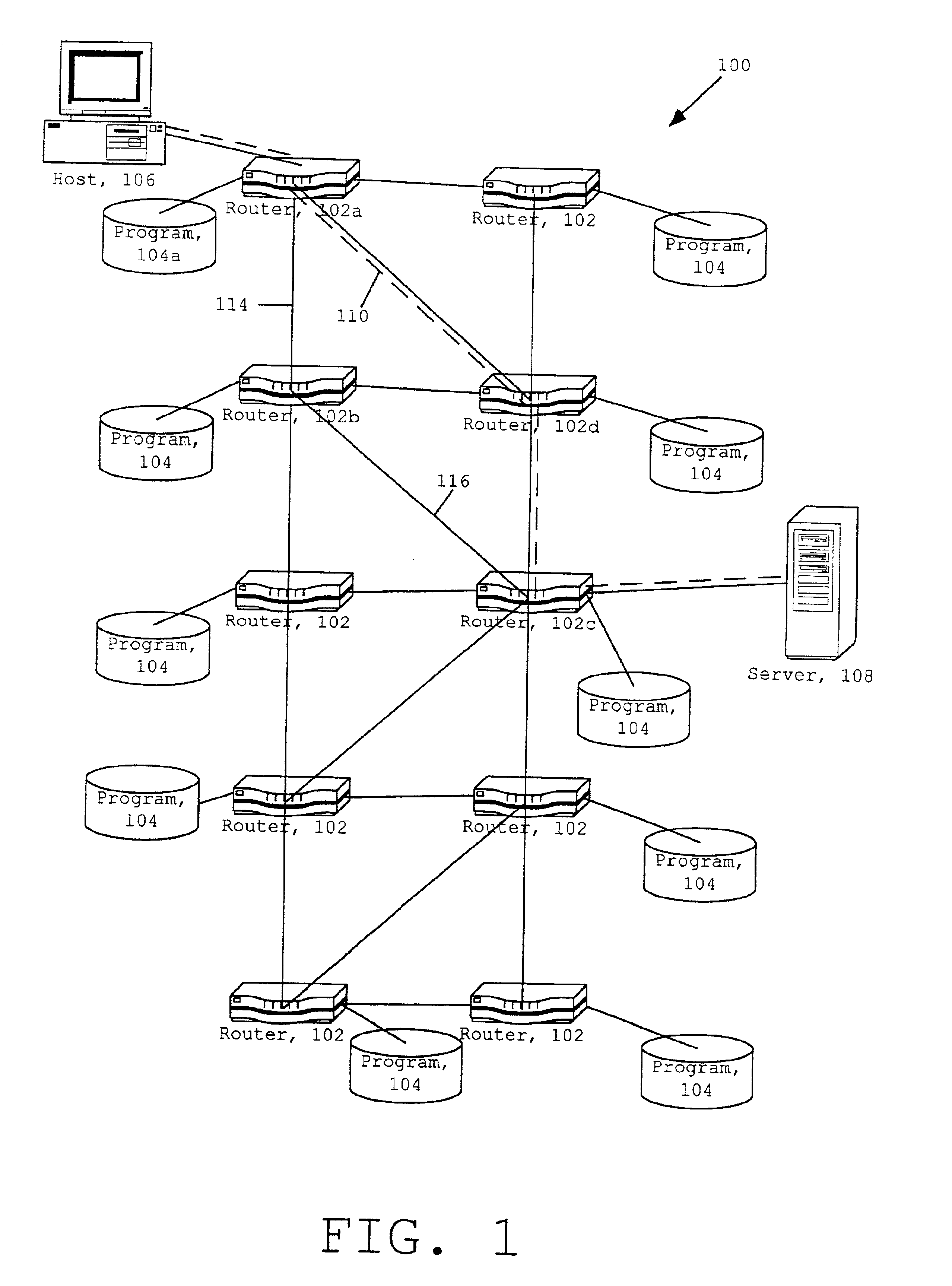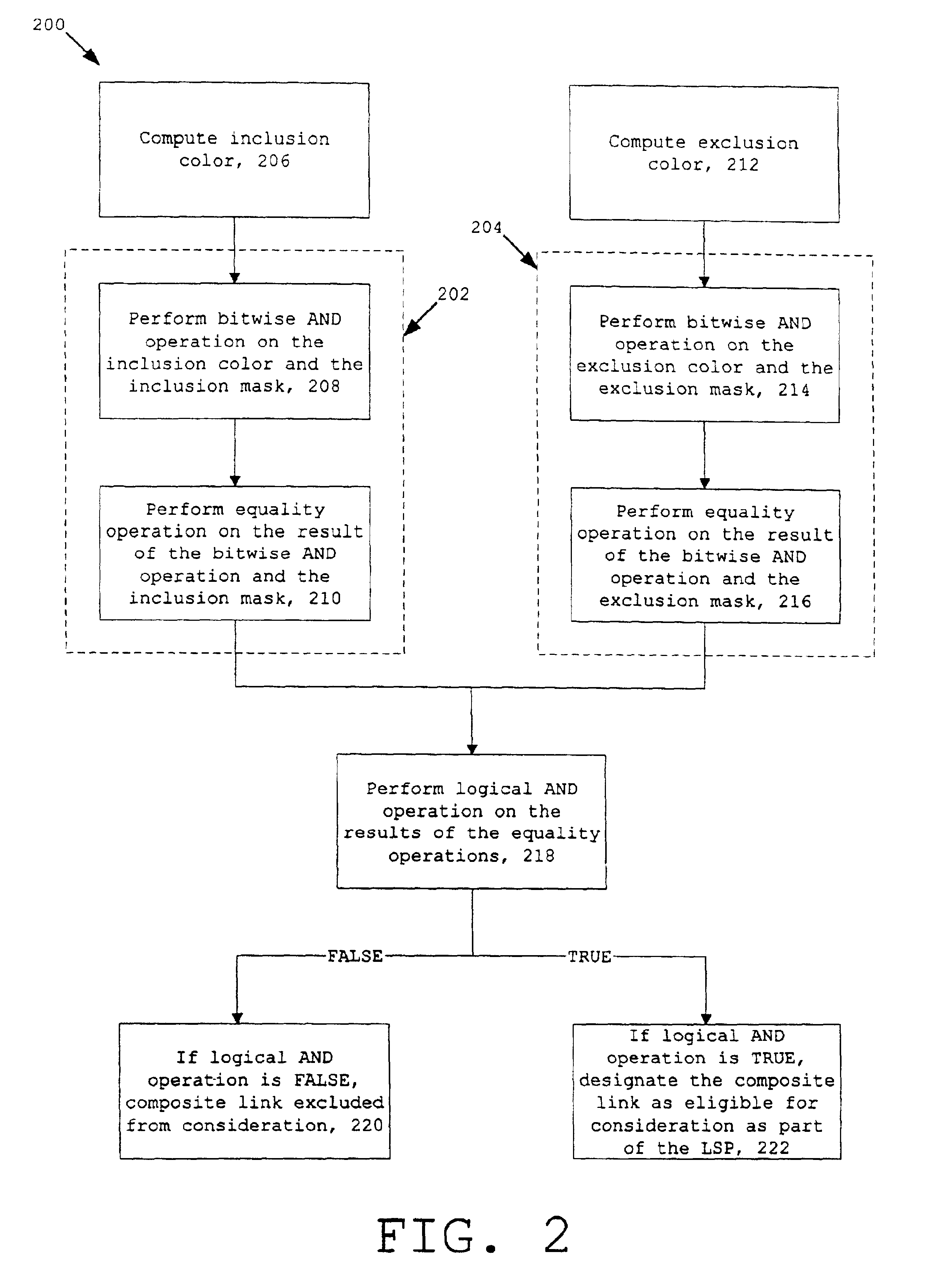Computing and using resource colors for composite links
- Summary
- Abstract
- Description
- Claims
- Application Information
AI Technical Summary
Benefits of technology
Problems solved by technology
Method used
Image
Examples
Embodiment Construction
Referring to FIG. 1, LSPs can be set up in a network configuration 100. The network configuration 100 can include one or more networks, e.g., the Internet and a local network. Typically, a device capable of routing data through a network such as a router 102 included in the network configuration 100 sets up an LSP. Path selection for the LSP is typically based on different metrics. Metrics are weights assigned to links in the network configuration 100 that indicate the relative preference of using one link over another during path selection. Examples of metrics include hop count, available bandwidth, propagation and transmission delay, administrative costs, and economic costs. In setting up an LSP based on one or more metrics, a router 102 usually uses a signaling protocol, e.g., RSVP or CR-LDP, and the path determined by the IGP's path selection process that operates on network topology information contained in a link state database maintained by the router 102. The router's respon...
PUM
 Login to View More
Login to View More Abstract
Description
Claims
Application Information
 Login to View More
Login to View More - R&D
- Intellectual Property
- Life Sciences
- Materials
- Tech Scout
- Unparalleled Data Quality
- Higher Quality Content
- 60% Fewer Hallucinations
Browse by: Latest US Patents, China's latest patents, Technical Efficacy Thesaurus, Application Domain, Technology Topic, Popular Technical Reports.
© 2025 PatSnap. All rights reserved.Legal|Privacy policy|Modern Slavery Act Transparency Statement|Sitemap|About US| Contact US: help@patsnap.com



